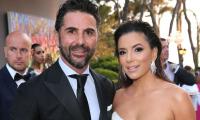Incoming! Incoming! Uh . . . pardon me while I interrupt this false alarm to quote Martin Luther King:
“Science investigates,” he says in The Strength To Love, “religion interprets. Science gives man knowledge, which is power; religion gives man wisdom, which is control. Science deals mainly with facts; religion deals mainly with values. The two are not rivals.”
These words stopped me in my tracks on MLK Day. They seemed to fill a hole in the breaking news, which never quite manages to balance power with wisdom, or even acknowledge the distinction.
Our relationship to power is unquestioned, e.g.: “In the United States itself, there are around [nuclear] 4,500 warheads, of which approximately 1,740 are deployed,” Karthika Sasikumar writes at the Bulletin of the Atomic Scientists. “Even more worrying, around 900 of these are on hair-trigger alert, which means that they could be launched within 10 minutes of receiving a warning (which could turn out to be a false alarm). . . .
“The threat to the United States is very real, but fattening the nuclear arsenal is not a rational response. The United States already has 100 times as many warheads as North Korea. . . .”
The US has enormous power, but so what? Such data is almost never addressed in the mainstream media – certainly not in the context of . . . disarmament. That concept is sealed shut, barred from the consciousness of generals and news anchors.
Certainly it didn’t come up in the coverage of what happened last Saturday in Hawaii, when an employee of the Hawaii Emergency Management Agency hit the wrong link on his computer screen during a shift change and an incoming-missile alert went statewide, throwing residents and tourists into 38 minutes of panic: “Children going down manholes, stores closing their doors to those seeking shelter and cars driving at high speeds ...”
Nor did it come up three days later, when a false missile alert went off in Japan, a country with a few memories of the real thing: “Within 10 seconds the fire that wiped out the city came after us at full speed. Everyone was naked. Bodies were swelling up. Some people were so deformed I couldn’t tell if they were male or female. People died screaming, ‘Please give me water!’”
So said Emiko Okada, who was a little girl living with her family on the outskirts of Hiroshima on Aug. 6, 1945. Her older sister, who had just left for school, disappeared that morning and was never seen again. Emiko tells her story in the remarkable 2010 documentary Atomic Mom.
In a column I wrote about the movie at the time, I asked: “What if schoolchildren stood facing not the American flag every morning before class started but a photograph of a devastated Hiroshima, shortly after it was obliterated by our atomic bomb, and pledged their allegiance to the idea that such a thing will never happen again?”
What, I wondered, if we started facing our fears instead of living in fear? To do so, we have to find wisdom in the maw of power.
What we find instead is a president who shook up the whole planet when he called Haiti and the countries of Africa shithole nations – managing, as far as I can tell, to make the word ‘shithole’ far more acceptable to utter in public than ‘disarmament.’
But the monstrousness of the word isn’t that it used to be obscene, but rather that it does what so many other words do: renders a segment of humanity soulless: the enemy, and therefore expendable. Japan is now our ally, but when we nuked Hiroshima and Nagasaki, its people were Japs or Nips and without value.
This article has been excerpted from: ‘Nuclear Annihilation and the Wisdom of Mass Salvation.’
Courtesy: Commondreams.org
Prime Minister Shehbaz Sharif has laid the foundation of a Daanish school in Islamabad’s Kuri Village
Ahfaz-ur-Rahman was also an Urdu poet of considerable reputation with his poems concerning a wide range of political...
In this picture taken on April 16, 2023, people throng a market area during shopping in Lahore. — AFPCare to cast...
A representational image of a transmission tower, also known as an electricity pylon. — AFP/FileLower electricity...
Pakistan's third Governor General Ghulam Muhammad. — National Portrait Gallery website/FileAs discussed in the...
This image shows Karachi Police personnel and commandos standing guard on November 29, 2023. — Facebook/Karachi...







